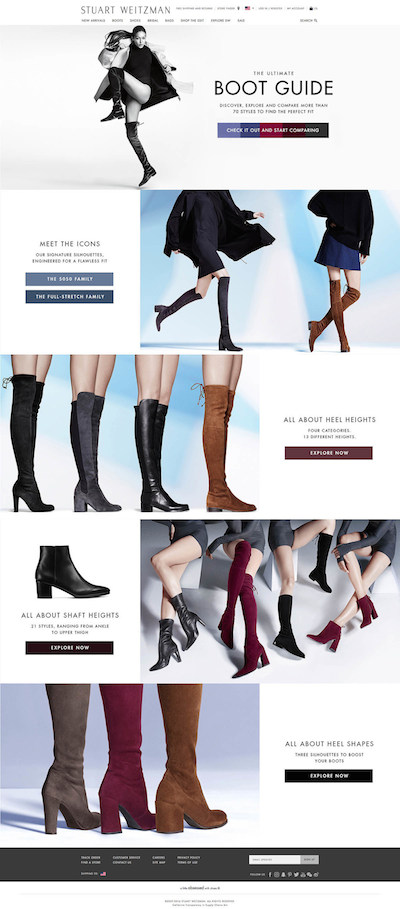Stuart Weitzman provides introductory course in boots via ecommerce guide
U.S. footwear label Stuart Weitzman is walking consumers through its extensive selection of boots with an interactive ecommerce feature.
“The Ultimate Boot Guide,” available exclusively on the brand’s Web site, allows shoppers to compare key details of 70 styles, such as heel height and closure, to help her find the right fit. Providing additional insight into the collection, content delves into the history behind some of Stuart Weitzman’s most iconic boot families.
Well heeled
Stuart Weitzman’s boot guide is accessible from its homepage on desktop and mobile. From a listing of products, consumers can select up to four styles to compare.
Once they click a “compare now” button, the user is shown the boots side by side, with 10 characteristics displayed in a list below each style. This includes shaft height, heel height, heel type, toe shape, closure, sole type, material and the closest relative style.

Screenshot of Stuart Weitzman’s homepage
For instance, the Lowland over-the-knee boot is paired with the Kneezie, a similar style with a lower shaft height.
Directly from the comparison, consumers can select their size and color preference and add a boot to their shopping bag.
Additional information found at the top of the page runs through a brief biography of key styles, including the 5050 boot and the full stretch family. It also explains some terminology, including shaft height, heel height and heel shapes, pointing out the brand’s craftsmanship and design details in the process.
Providing context for ecommerce pages can help to recreate the sales consultation experience for the online shopper. As luxury brands sell more online, providing these additional touchpoints may help them compete with pure-play ecommerce platforms.
A recent report by L2 found that there have been significant investments in guided selling tools. For instance, 92 percent of specialty retailers at present have lookbooks and style guides, and 52 percent of these are shoppable (see story).
